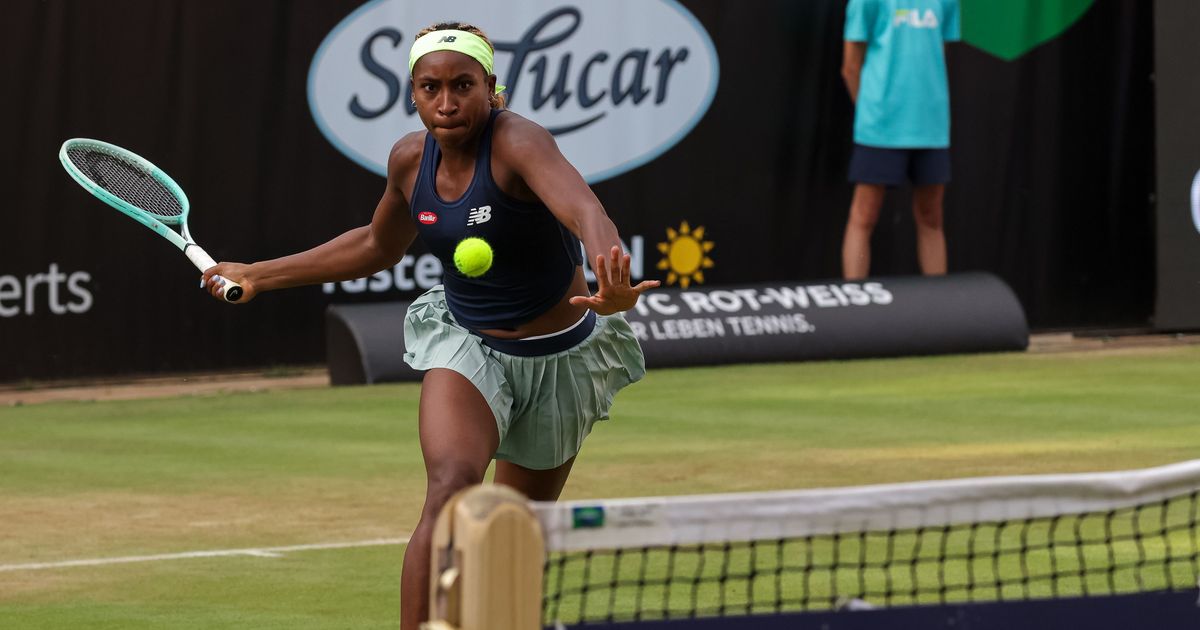
Jelena Ostapenko remembers the first time she stepped on a grass court. It was 2012, and she was at Roehampton for a Grade 1 junior tournament.
“The first thing I had in my mind is, ‘How can we play tennis on this surface,” Ostapenko said. “This surface is meant to be for football. What are we doing here?
“Then every year it was better and better. Now I like it a lot.”
A player’s success on the Hologic WTA Tour is fueled by adaptability. Professional tennis players travel from city to city, crossing continents and time zones, to play in varying conditions week to week.
Not all hard courts are the same. The speed and bounce variances between different clay courts and grass courts can shift a player’s chances at any given tournament. Throw in different balls and weather conditions — humid vs. dry, hot vs. cool, altitude vs. sea level — and players are always racing against the clock to acclimate in time for competition to start.
But when it comes to the toughest adjustment on tour, nothing competes with the swift and abrupt change from clay to grass. After nine weeks of grinding a sliding around on the slow, high-bouncing clay, the tour turns to a five-week grass season.
“Since I was young, one of the things I love about tennis is you have different surfaces so you have to play different,” Zheng Qinwen said. “That is what I like. Other sports have the same track, same surface.
“Maybe tennis is the only sport you have three different surfaces to change. Clay is more physical, you have to run more. Grass is more slice, hit the serve, you don’t think. Hard court, that’s how everyone starts in tennis. I love all the different surfaces.”
Here are some of the reasons the transition to grass is so tricky:
Low Bounces
All you have to do is find a patch of grass and drop a tennis ball to see just how jarringly different the ball reacts on a soft natural surface compared to a hard and solid one. There’s a reason, historically, professional tennis on a grass court revolved around the serve and volley. If you take the ball out of the air, you don’t have to worry about low or bad bounces.
“On clay, it’s longer rallies, the bounce is quite high, everything is lots of spin,” World No.3 Aryna Sabalenka said. “On grass you step in and there’s no bounce, you have to stay so low. It’s more of a flat game. It’s tough to go for topspin, it’s just not working. So you have to change your tactic.
“It’s a massive difference, but I like it.”
Robin Montgomery is learning to like it. The 19-year-old American successfully qualified for her first Wimbledon main draw this week and made the quarterfinals at the Libema Open earlier this month.
“All you can really do is just laugh about it,” Montgomery said. “I had a longer swing on clay court and when you play on clay you realize you have a lot of time and your backswing gets bigger. I had to shorten it here.
“Staying low is the thing I’m working on. The quads, you feel the burn. On returns I feel like I’m holding a wall squat. My coach is like ‘Stay low’ And I’m like, ‘I am low!'”
Movement and Footwork
More than any other factor, the change in footwork and movement is what players cite as the most difficult adjustment. On hard courts and clay, the term “movement” typically refers to speed or court coverage. But flat-out speed is not always a benefit on grass. Sure, being fast allows you to track down drop shots and extend rallies.
But speed is useless if you can’t stop.
“Running to the sides is tricky,” reigning Wimbledon champion Marketa Vondrousova said. “We’re used to sliding, so big steps [then slide to stop]and on grass it’s about small steps [to stop] and then go back.
“Because if you push too much to the side, you’re gone. You can just stay there.”
Sliding in and out of the corners is a foundational element for the top two players in the women’s game, Iga Swiatek and Coco Gauff. Neither has yet to win a title on grass or make it past the quarterfinals at Wimbledon. The irony is they both had memorable breakouts at Wimbledon. Gauff made her Grand Slam debut there and made the Round of 16 at 15 years old. Swiatek won the junior title.
“Some people do slide on grass,” Gauff said. “I’m not one of those people that tries to do it. I know sometimes I can, but I would advise not to. You just have to do small steps at the end and you’re probably not going to be able to change direction as fast.
“But that’s just something that all players have to deal with. If your movement might be hindered then someone who doesn’t move as well is also hindered.”
Small Margins
Bianca Andreescu has a game that seems built to be more successful on clay than grass. But the 2019 US Open champion has found, over time, she actually enjoys playing on grass more. In fact, her last two Hologic WTA Tour finals have come on grass, including a few weeks ago at ‘s-Hertogenbosch.
“The grass, it’s obviously much faster, so it gives me less time to think,” Andreescu said. “Clay, I feel like I have I have more time to think and maybe overthink too much, and then I choose the wrong shot at the wrong time.”
Leylah Fernandez agreed with her Olympic teammate. If clay is about the brain, grass is about the gut. Fernandez has followed her gut this week at the Rothesay International to make her first final of the year.
“You have more time on clay so you see more options that you can hit,” Fernandez said. “On grass, you don’t have any options. Once you think of a shot you just have to commit to it. If it goes in, it goes in, if it goes out, ok next point.
“I think the biggest thing about playing on grass is commitment and not doubting yourself.”
The mental strain is undeniable. While the nature of clay-court tennis means players always believe there’s a pathway for a comeback, lose your focus for one game and the entire match could be out of your hands.
“It’s important here to accept that things may not be easy,” said French Open finalist Jasmine Paolini, who won her first tour-level grass-court match this week in Eastbourne.
“The matches are changing in one or two points. If you get broken, it’s tough to stay in the match. It’s not easy. You have not too many time and options to come back. You have to be extra focused. But that’s for everybody.”
Lack of Experience
Here’s a stat: Swiatek played her first professional grass-court match at 2019 Birmingham in qualifying. She has played a total of 23 grass-court over the past four seasons.
She played 22 matches on clay just this year.
Players don’t have the time and opportunity to practice and play on grass. Grass courts are scarce, let alone courts that have the quality that can replicate the conditions at Wimbledon.
“We have one court near Prague so we practiced there,” Vondrousova said. “Well, we have two, but the other one is really bad.”
Vondrousova’s countrywoman Linda Noskova is hungry for any time she can get on a grass court. The 19-year-old has the type of game that can mow down the opposition on grass: big serve, big forehand, aggressive mindset. But Noskova admits she has no idea how to put it all together on grass. Yet.
“I don’t really know every time if the opponent plays this, where will it go and how will it bounce,” Noskova said. “So I need to get used to more situations and learn to create them myself.
“[Because of] the fewer matches we have in the short grass season, we probably focus more on details in each practice because it’s really a treasure when you can go on a grass court. Just two hours a day at a tournament. At Wimbledon they close the courts at 7 p.m.
“So everyone puts a lot of pressure on themselves because it’s also physically harder and mentally, too. It’s definitely draining.”
Short Season
The five-week grass season starts the Monday after Roland Garros. Players have, at most, three tournaments to shore up their games before Wimbledon. It is the shortest swing of the season, which only exacerbates the pressure to get it right.
“You play everything and it’s going slow on other surfaces, and then after clay, boom boom it’s done and you’re back on hard court,” Sabalenka said. “It’s very fast and quick.
“How do I manage that? I don’t know — praying that I’ll do well.”
Sabalenka laughed as she said it. The truth is, the two-time Wimbledon semifinalist doesn’t really faith in a higher power — she just needs faith in herself.
“I made my decision not to play the tournament the week before a Grand Slam, so there are opportunities to practice and get better if you need,” she said. “But I don’t feel like I need that many matches on grass before going to Wimbledon, especially [because] physically on the grass you have to stay low. It’s affecting your body, you’re getting tired faster because you’re staying low.
“I think we just don’t play enough time on grass, so I just don’t have enough chances to [win a grass tournament.] I made some good results and I feel really good. I think grass really suits my game quite well.”
Source: https://www.wtatennis.com/news/4046725/five-reasons-grass-courts-might-be-the-trickiest-surface-in-tennis


